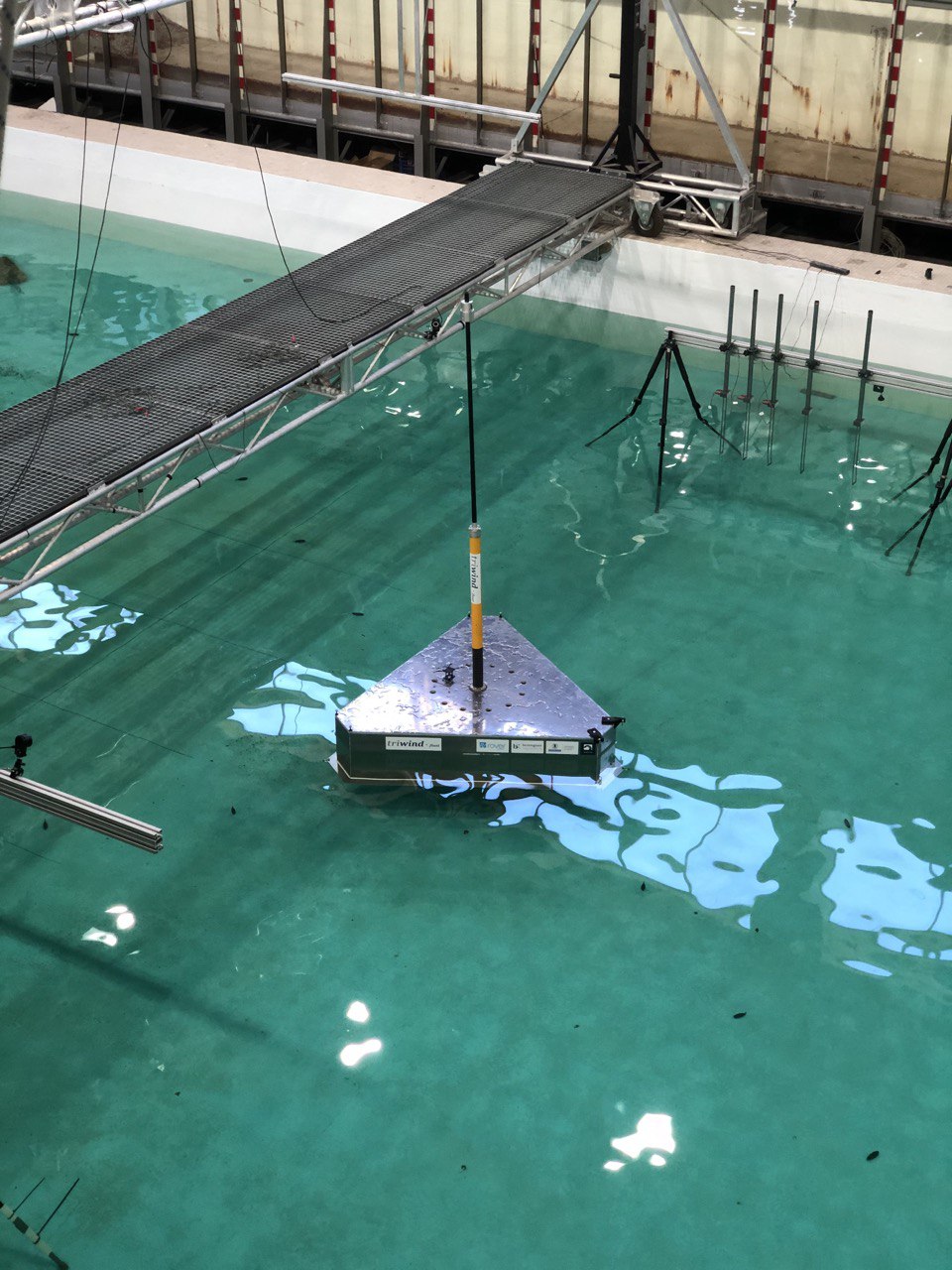Site card
Test tank of the Ports Laboratory, Civil Engineering Technical School
Where:
Environment Coast and Ocean Research Laboratory
Ubicación:
Laboratorio de Puertos, ETS Ingenieros de Caminos, Canales y Puertos
Typology:
Infraestructura Científica
Manager: José Luis Orts Egio
Email:
The Ports and Coasts Laboratory of the Universidad Politécnica de Madrid consists of a 52-metre-long channel with a 1 metre-wide by 1.5-metre high cross-section. It is able to generate regular and irregular waves of up to 0.45 metres in a depth of 1 metre. It has reflected-wave absorption control and it controls dissipation using polyurethane foam. It also has a tank or pool for three-dimensional testing, which occupies the central part of the building; it has a depth of 1.36 metres, a width of 11 metres and a length of 33 metres. The bottom of the tank is finished in in situ terrazzo and the vertical walls are finished in continuous tiling, fitted with an anti-reflection system using 10 ppi polyurethane foams. Multi-directional waves are generated with absorption control, by moving individual paddles, and can reach up to 1 metre. The wave maker, which comprises 16 paddles measuring 0.70 metres in width and 1.30 metres in length, has the following performance: H = 0.25 metres in water 0.60 metres deep. The wave generation and calibration process is computerised by means of a workstation, a communications card, a conversion unit and an interface with a connection card for at least eight differential analogue input channels or 16 common channels and two analogue output channels. The facility is complemented by wave measurement, programming and calibration equipment; data acquisition and analysis equipment, and a small calculation centre with mathematical and numerical models for comparison.
Hydraulics, Energy and the Environment. Marine Engineering
The facility is used to carry out hydrodynamic tests on a scale of 1/50 to 1/150 in a 33-metre by 11-metre by 1.20-metre pool, mainly on the behaviour of port facilities and floating elements ¿ both ships and offshore wind energy devices ¿ in response to internal agitation. With a 52-metre-long by 1.50-metre-wide channel, it is possible to analyse typical sections of dykes, both breakwaters and vertical dykes, in relation to waves, forces derived from waves or functionality, overtopping and overflow.
In 2020 and 2021, four barge-type floating platforms based on TRIWIND technology have been tested. The structural and functional stability behaviour of a port in the Basque Country is also being tested.
Offshore wind market and the 2030 Agenda Sustainable Development Goals (SDGs): SDG 7, Affordable and clean energy; SDG 13, Climate action; SDG 14, Life below water; and SDG 11, Sustainable cities and communities. The aim is to improve harmony with the physical environment and the interaction between land and sea.
This is a cutting-edge facility both physically and in terms of equipment and instrumentation.






